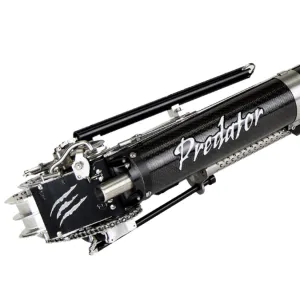An old heirloom dating back to the 1600s, Early Round Dutch cabbage was developed in the Netherlands and has been popular throughout Europe for centuries. Early Round Dutch cabbage is a fast-maturing variety, well suited for short growing seasons and colder climates. The heads are smaller than the late maturing varieties and the taste is a bit milder, yet also sweet and crunchy. The heads grow to about 6-8 inches in diameter and weigh between 1-2 pounds with dark green outer leaves and pale green inner leaves. Early Round Dutch is a quick to harvest variety that produces small to medium cabbages that are perfect for making coleslaw, sauerkraut and traditional German and Dutch dishes.
GROWING INSTRUCTIONS
Growing your own cabbage patch is quite a satisfying deed. It is cheap enough at the market, but nothing beats fresh homegrown. Cabbage has myriad of uses and health benefits.
Start seeds indoors 4-6 weeks before the date of the last spring frost. Plant the seeds into flats about 1 cm deep and 2 cm apart. While inside, keep seeds moist, warm and well lit.
Cabbage will do best in long cool growing seasons. It can tolerate frost and temporary temperatures down to -6°C, but will bolt and seed in temperatures above 26°C. Transplant seedlings into the garden when they are 10-15 cm tall. Space them about 45-60 cm in rows 60-90 cm apart. Harden off young plants for a couple weeks to acclimate them to the sun and then transplant as early as 3 weeks before the last frost is expected.
If your region experiences cool summers, seeds can be sown directly in late spring for a fall harvest. Give cabbage 3-5 cm of water/week but decrease that amount close to harvest time to prevent the heads from splitting. Mulch around cabbages and feed every 2 weeks with a mild nitrogen fertilizer.
The heads will be ready to harvest anywhere from 80-160 days depending on the variety. Cut the heads in spring before the weather gets too warm. In the late fall and winter, they will withstand a snow cover and taste sweeter and crispier having been exposed to the elements and cold. The ideal head is firm and 10-25 cm around the base. Cabbage stores very well. Enjoy yours raw, boiled or fermented. Any preparation will be full of flavour and nutrition!
QUICK FACTS
- The cabbage was first domesticated in Europe around 1000 BCE, although Savoys were not developed until the 16th century. During the middle ages, cabbage became a prominent part of European cuisine.
- Cabbage is a cold-resistant vegetable, making it a versatile choice for northern growers.
- To get two crops, leave some of the bottom leaves when harvesting the main head, then treat it as a new plant. Three to six baseball-size sub-heads will grow around the rim of the original plant's stub. Mini cabbages are preferred by many chefs because of their extra tender texture and tasty mild flavor.
- Cabbage seeds will remain viable for 4 years if stored in a cool, dark place, ideally between 4 and 10⁰C. After that, the germination rate may start to go down.












